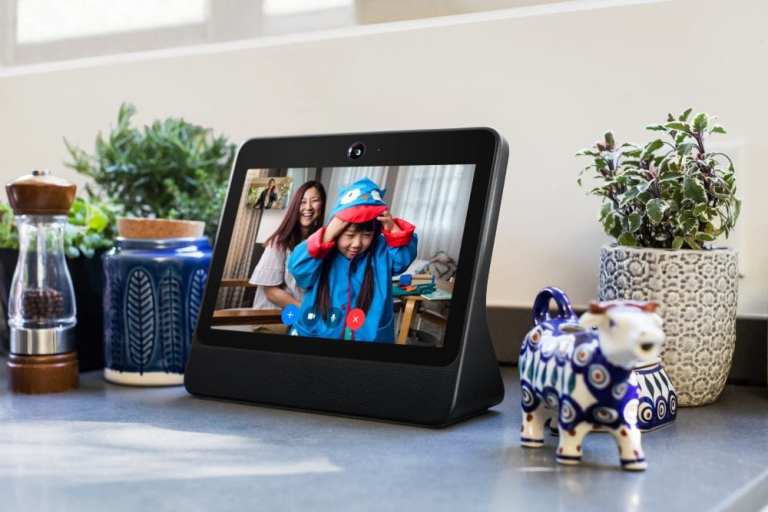New Facebook Portal Offers Enhanced Camera Privacy Options

Facebook’s latest Portal has placed a bigger emphasis on privacy as the company looks to reassure users their information is safe in its hands.
Launched in 2018, the original Portal featured only a small piece of plastic that clipped over the camera. The new version comes with a three-position physical button that can open the camera and mic, cover the camera but keep the mic on, or disconnect both the camera and the mic.
“[The plastic ] was a nice thought, but, practically, users might lose that, and it’s not always visible and available for users who want to cover the camera gracefully,” Facebook Director, Product Management Micah Collins told TechCrunch. “So we wanted to make sure that was a very integral and communicative part of the design.”
While the Portal boasts Alexa and music services like Spotify and Pandora, it was designed mainly to be a home video conferencing product. As the company explained in a blog post from September, the devices AI-powered Smart Camera allows users to “move and talk freely while always being in frame,” while “Smart Sound enhances the voice of whoever is speaking while minimizing unwanted background noise.” For added security, the company pointed that its AI technology runs locally on Portal, not on Facebook servers.
In addition, Facebook will be releasing additional AR Effects and Story Time stories, and there are 14 apps listed in the onboard store, including CNN, Food Network, Pandora, Spotify and iHeartRadio. And at $179, the Portal is set at a reasonable price point.
But as TC points out, it isn’t clear how the Portal differentiates itself from Google Nest Hub Max, which also added similar AI camera panning, zooming and framing to its devices.
“Nest has done a fine job,” Collins said. “We’re really happy they followed our lead in that sense of trying to deliver a richer calling experience.”